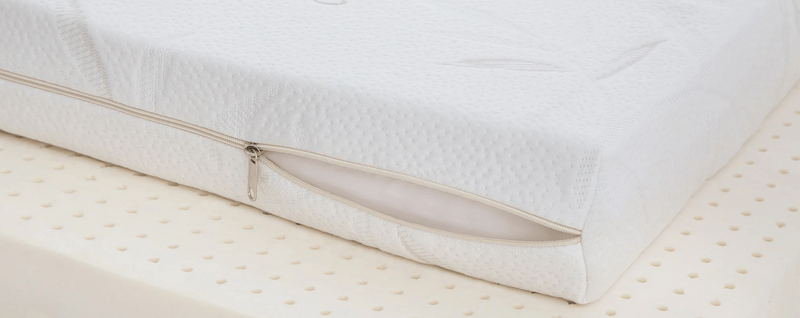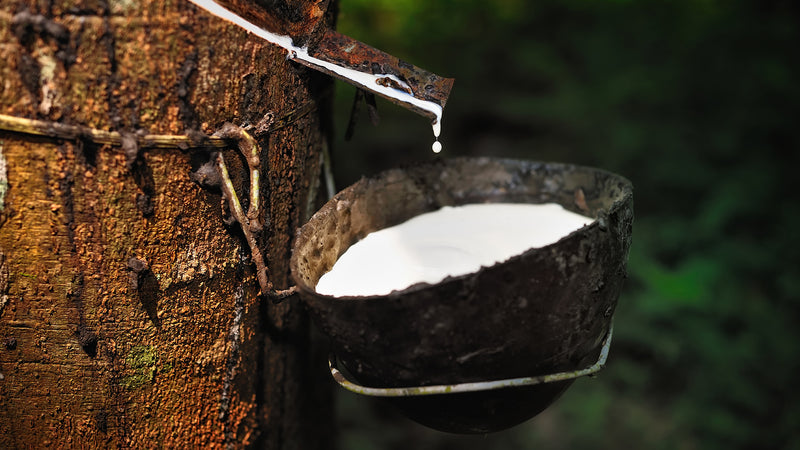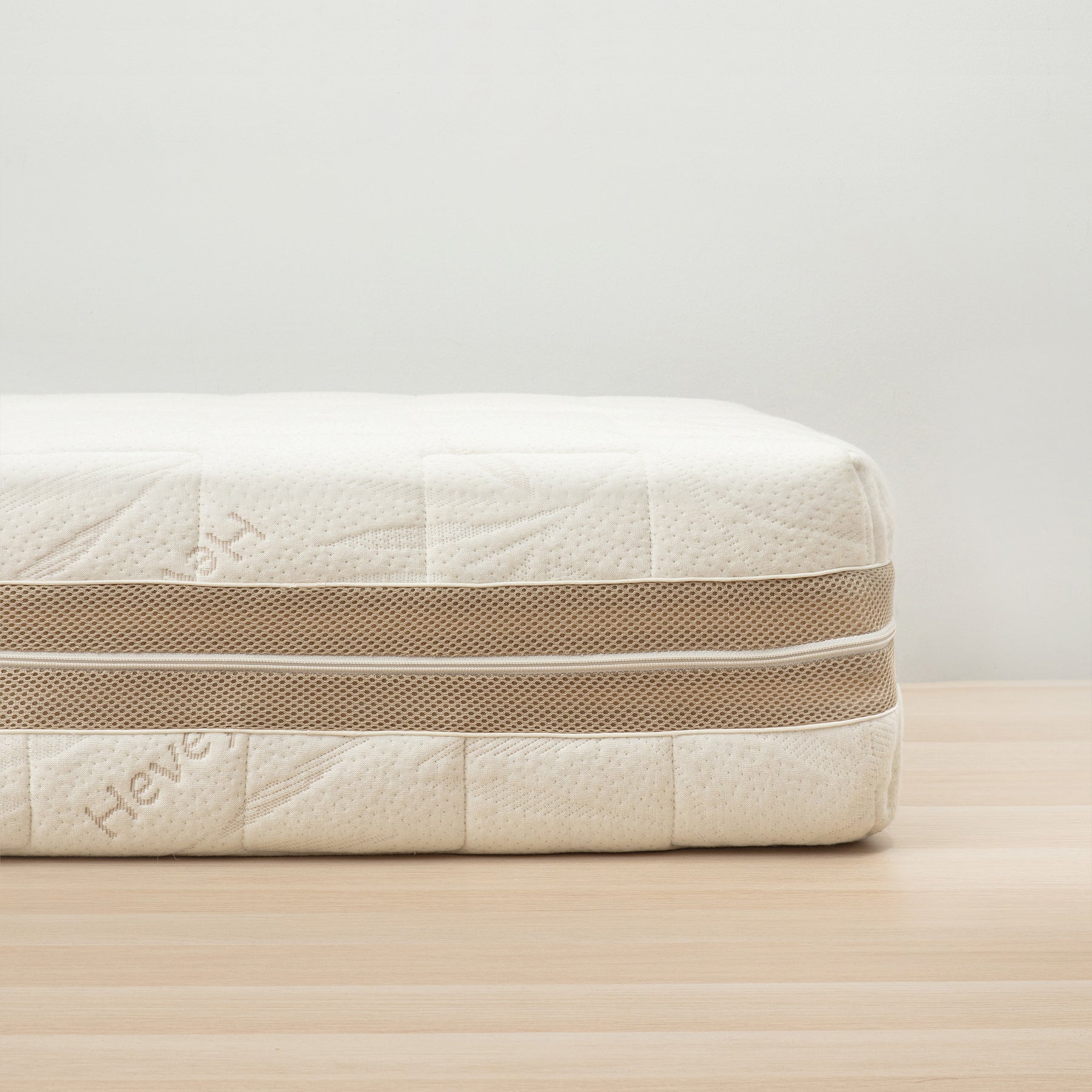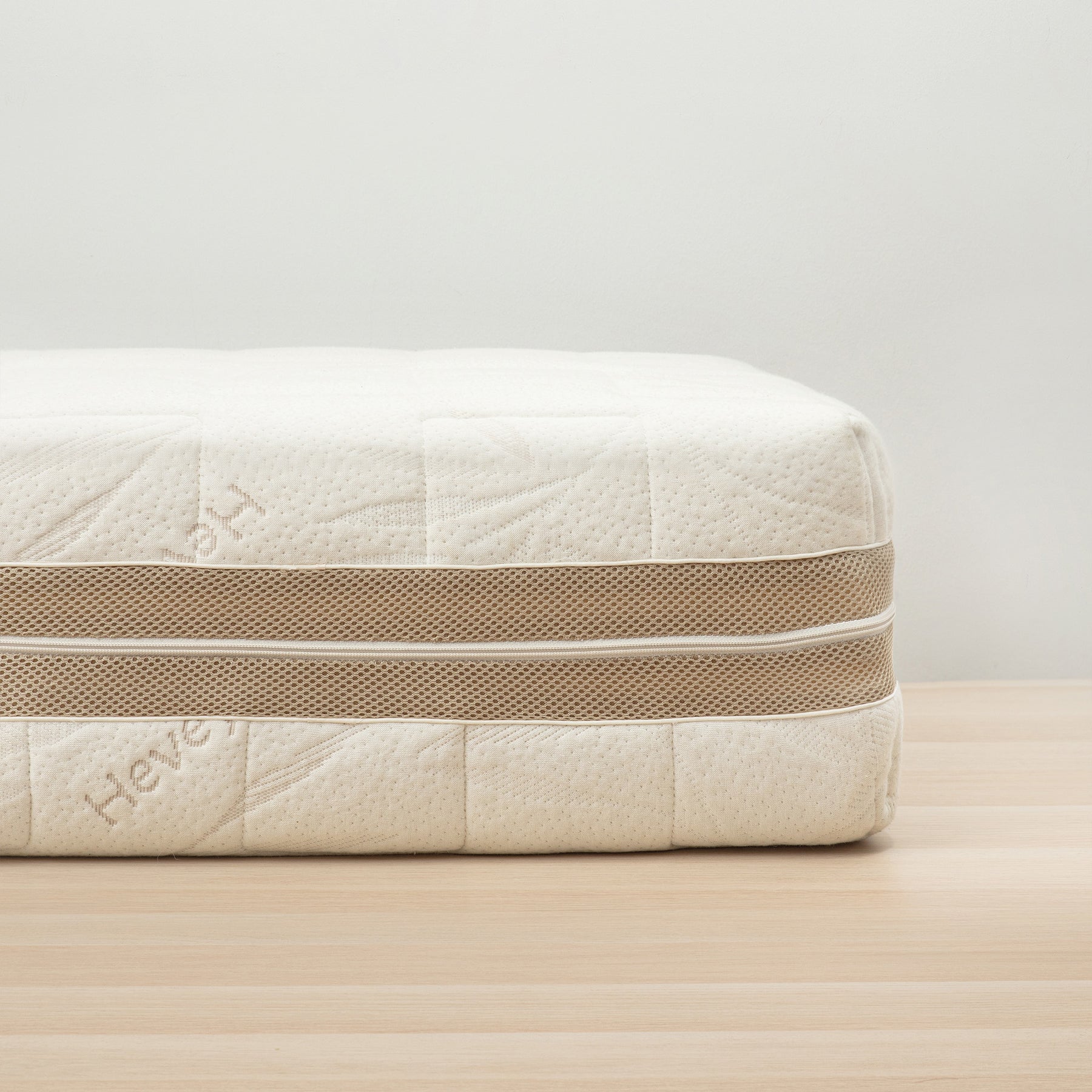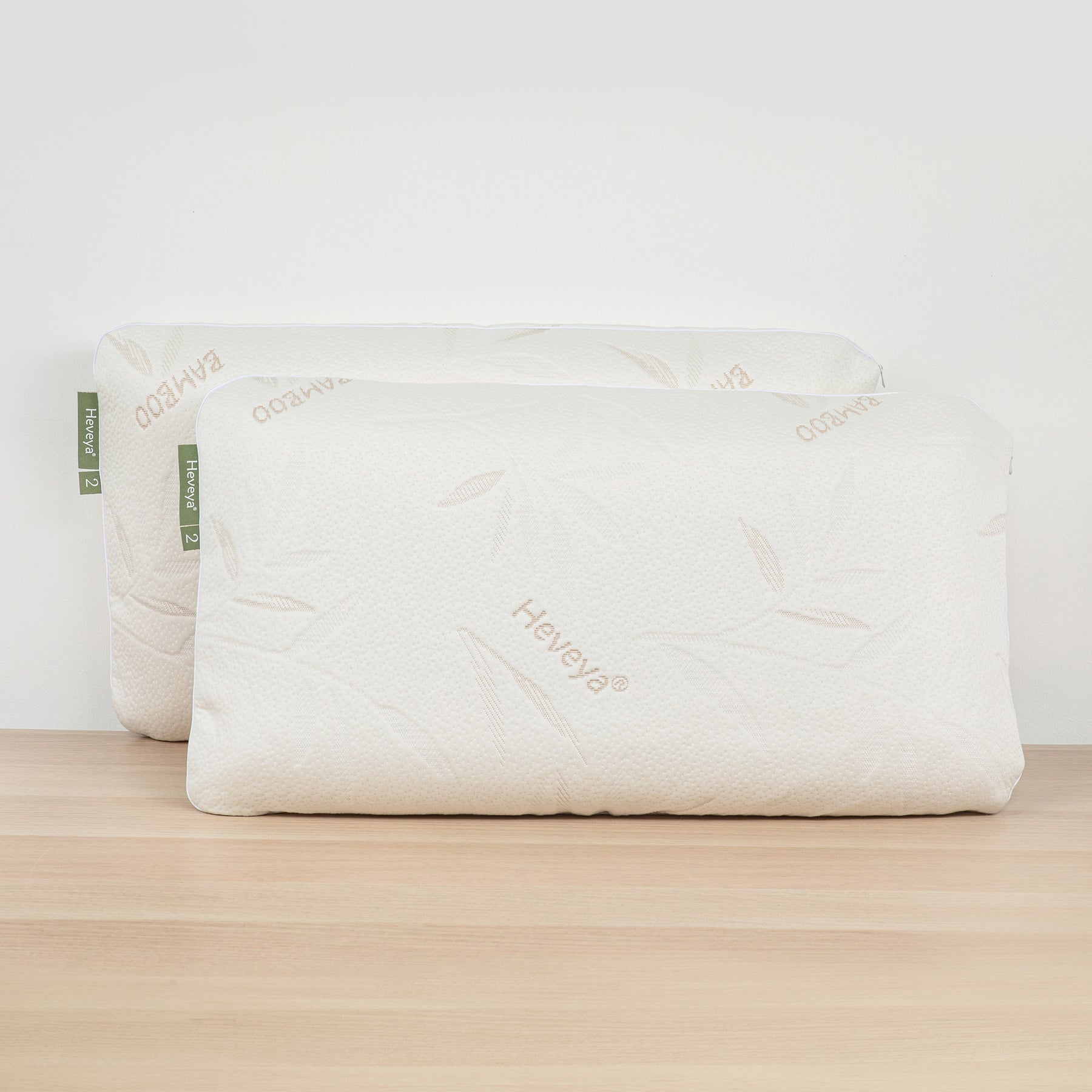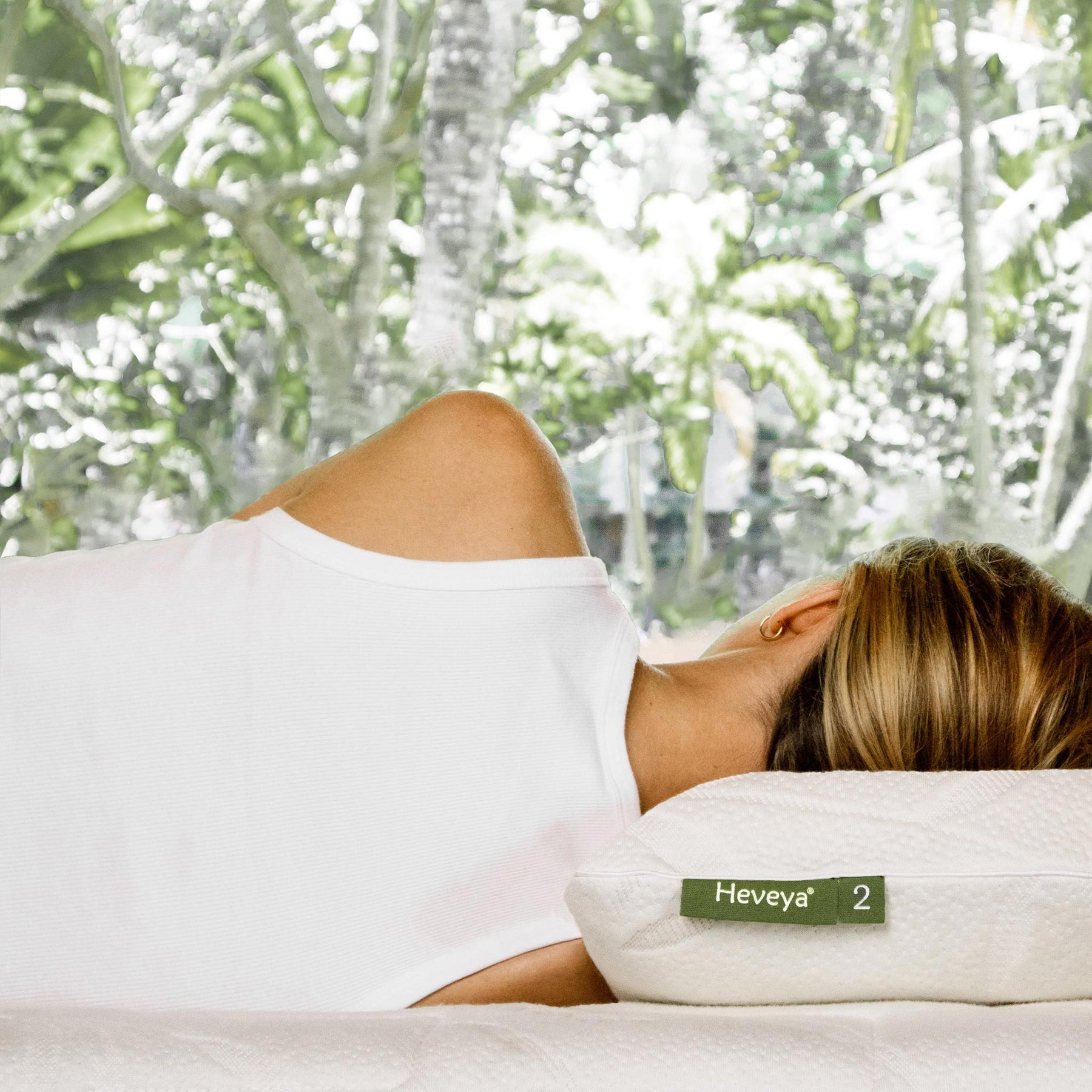Are you debating between a natural latex and a memory foam mattress? Is your current bed leaving you feeling hot, restless and far from well-rested? You’re not alone. In today’s fast-paced world, quality sleep has become a true luxury. One that starts with choosing the best mattress for your body and lifestyle.
When you begin searching for the best mattress in Bali & Jakarta, you’ll quickly discover two clear contenders: natural latex and memory foam. Both promise comfort, yet they come from very different worlds. Memory foam (also known as viscoelastic foam) is engineered to contour closely to the body, while natural latex mattresses are made from the sap of the rubber tree, offering responsive support and breathability that suits Indonesia’s humid climate perfectly.
This guide will help you understand the real difference between these popular types of mattresses, natural latex vs memory foam. We’ll be exploring their feel, durability, cooling properties and sustainability. Whether you’re visiting luxury mattress stores or browsing online, our goal is to help you find the best store to buy a mattress and confidently choose the material that meets your sleep needs. Because a truly restful night’s sleep isn’t just about comfort, it’s about breathing easier, sleeping better and waking up restored.
At a Glance: A Quick Comparison of Two Leading Mattress Types
Before choosing between a natural latex or memory foam mattress, it’s worth understanding what each is made from. Their origins influence everything from comfort and durability to breathability and sustainability.
A natural latex mattress is derived from the sap of the Hevea brasiliensis rubber tree, which is a renewable resource that’s harvested through a gentle, sustainable process. Skilled tappers make small incisions in the bark to collect the milky sap without damaging the tree, allowing it to regenerate continuously for decades. This liquid latex is then whipped, moulded and baked using either the Dunlop or Talalay method, creating a buoyant and supportive foam. Due to its natural composition, an all-latex mattress is free from harmful chemicals and is naturally resistant to dust mites and mould, a major advantage in humid climates like Indonesia.
Memory foam comes from a completely different origin. It is a synthetic material made primarily from polyurethane, a petroleum-based compound, combined with additives to create its signature slow-moving, contouring effect. Originally developed for aerospace and medical uses, memory foam was designed for pressure relief, not breathability. This makes it an appealing yet less natural option compared to latex.
In short, when comparing natural latex vs memory foam, the key distinction begins with their very foundation: one comes from nature, the other from industry.
The User Experience: Answering 'Which Mattress Is Coolest and Most Comfortable?'
Comfort is deeply personal, yet natural latex and memory foam create two completely different sleep experiences. Understanding how each material feels will help you find the best mattress for your body and lifestyle.
Natural Latex: Buoyant Support and Effortless Movement
Lying on a natural latex mattress feels instantly supportive, a light and buoyant lift rather than a deep sink. Both memory foam and natural latex mattresses contour to the body, but latex does it differently. This balanced comfort comes from latex’s natural elasticity and structure. Through the Dunlop process, the foam forms a denser base and a softer top, creating gentle cushioning where you need it and firmer support underneath. In Heveya mattresses, this is further enhanced with thoughtful layering to deliver progressive support that adapts naturally to your body’s curves.
This natural responsiveness supports proper spinal alignment, which is why a natural latex mattress is often considered one of the best mattresses for back pain in Indonesia. Many who struggle with stiffness or discomfort find that natural latex’s adaptive support helps relieve pressure and reduce pain over time.
Another key benefit lies in its rapid responsiveness. As pressure is applied and released, the surface quickly returns to its original shape, allowing for seamless movement throughout the night. This responsiveness makes latex an excellent choice for combination sleepers, as it adapts instantly to shifts in position. The result is consistent support and spinal alignment without the resistance or “stuck” feeling often experienced with memory foam.
Finally, because of its open-cell structure, natural latex is one of the coolest mattress materials available, ensuring that your bed stays comfortably breathable even in Indonesia’s humid climate.
Memory Foam: Deep Contouring and the ‘Sinking’ Hug
Lying on a memory foam mattress feels very different from natural latex, even though both are types of foam mattresses. Memory foam is known for its slow, body-hugging response. As it warms up from your body heat, it softens and moulds perfectly to your shape. The result is a deep, cocoon-like cradle often described as sleeping in the bed rather than on it.
This close contouring can feel luxurious at first, but it comes with a few trade-offs. The dense structure means you’ll use more effort to shift positions at night, which can interrupt sleep for those who move often. More noticeably, memory foam tends to retain heat. This becomes an issue in warm and humid climates, making it less ideal for hot sleepers wondering which mattress is coolest.
While its pressure-relieving qualities make memory foam a long-standing favourite, many in Indonesia find that its heat retention and slower responsiveness can compromise comfort over time especially when compared to the naturally breathable latex mattress Indonesia sleepers love for its cooling lift and airflow.
The In-Depth Breakdown: Advantages and Disadvantages
Let's look closer at the specific pros and cons of each material. This detailed analysis will help you understand the nuances and find the best mattress Indonesia has to offer for your specific lifestyle and health needs.
Advantages and Disadvantages of a Natural Latex Mattress

Advantages
- Unmatched Comfort: A natural latex mattress delivers a rare balance of gentle softness and buoyant support. This is why it consistently ranks among the best mattresses for comfort and customer satisfaction.
- Excellent Body Pressure Support: Its natural elasticity keeps your spine in a healthy, neutral position throughout the night. By evenly distributing body pressure, it reduces tossing and turning and helps promote deeper rest.
- A Truly Natural Choice: When you choose a 100% natural latex mattress like Heveya that Indonesian families love, you’re choosing a mattress free from harsh synthetic chemicals, pesticides and glues. It’s a cleaner, safer option for your sleep and your home.
- Naturally Hypoallergenic: Natural latex has a dense, breathable structure that naturally resists mould, mildew and dust mites. It stays dry and fresh, creating an inhospitable environment for allergens to thrive.
- Superior Air Circulation: Thousands of microscopic air channels within the natural latex foam allow excellent ventilation. Combined with natural pinholes, this promotes consistent airflow, making it one of the coolest types of mattresses for warm and humid climates.
- Incredible Durability and Value: A 100% natural latex mattress can last 15 to 20 years or more without sagging. It offers a gentle, responsive support that adapts instantly to your movements, keeping you aligned and comfortable.
Disadvantages
- Initial Expense: It's more expensive upfront than a basic innerspring or a low-end foam mattress, but its long lifespan provides excellent long-term value.
Advantages and Disadvantages of a Memory Foam Mattress

Advantages
- Deep Contouring Comfort: For those who enjoy a deeply cradled feel, memory foam offers exceptional contouring that hugs the body closely. This can be especially beneficial for side sleepers who need targeted pressure relief on their hips and shoulders.
- Excellent Motion Isolation: If you share your bed with a restless partner, memory foam is a clear winner. Its dense composition absorbs movement effectively so you’re less likely to be disturbed when your partner shifts or gets up during the night.
Disadvantages
- Sleeps Hot: This is one of the most common drawbacks. The dense structure of memory foam tends to trap body heat, which can make it uncomfortable in warmer climates. Although gel or copper infusions are sometimes used to counter this, these cooling effects often fade over time.
- Off-Gassing and Chemical Odours: As a petroleum-based material, memory foam can emit Volatile Organic Compounds (VOCs) when new, producing a noticeable chemical smell. This can raise concerns for those who prefer a clean and natural sleep environment.
- Difficult to Move: The slow-response “hug” of memory foam is what many people love about it, but this same feature can make it harder to change positions smoothly. Those who move frequently during sleep may find it less responsive than they’d prefer.
- Poor Air Circulation: The dense structure that retains warmth also traps moisture, making it less ideal for humid climates like Indonesia.
- Limited Durability: Over time, memory foam tends to lose its resilience. Because of its slow-response nature, the foam gradually adapts to where the body rests most often, leading to visible body impressions or sagging after several years. This can reduce its overall support and comfort.
- High Cost, Shorter Lifespan: Quality memory foam mattresses can be expensive, yet they generally last only around 7–10 years which is significantly less than the 15–20 years typical of high-quality natural latex.
Transform Your Sleep with Heveya: Browse Our Collection Today
Overall, a natural latex mattress is better than a memory foam mattress because latex offers a comprehensive suite of advantages with fewer significant disadvantages. Memory foam is heavily marketed as comfortable and for a specific preference. While it is, shoppers are often unaware of the significant trade-offs in heat retention, health concerns from off-gassing and a shorter functional lifespan.
In contrast, a natural latex mattress provides a superior balance of comfort, responsive support, breathability, hypoallergenic properties and exceptional durability. Among the best mattress brands, a brand like Heveya, which focuses exclusively on high-quality, certified natural latex, is delivering a product that is a true investment in your long-term health and well-being.
Choosing a mattress is a profound health decision, as important as diet and exercise. By understanding these crucial differences, you're empowered to make a choice that serves your body and mind. If you're considering a natural latex mattress, the best way to understand the difference is to experience it firsthand. Visit the Heveya showroom in Bali & Jakarta, where you can experience our full range of natural latex mattresses and expert guidance in person.
As a premier luxury mattress store, we believe we are the best store to buy a mattress not just for a few years of comfort, but for decades of healthy sleep.
The right mattress is the foundation for a healthier life, helping you to breathe easier, sleep better and wake up every single day feeling restored and ready for anything.
Ready to experience the cooling comfort and buoyant support of nature?


